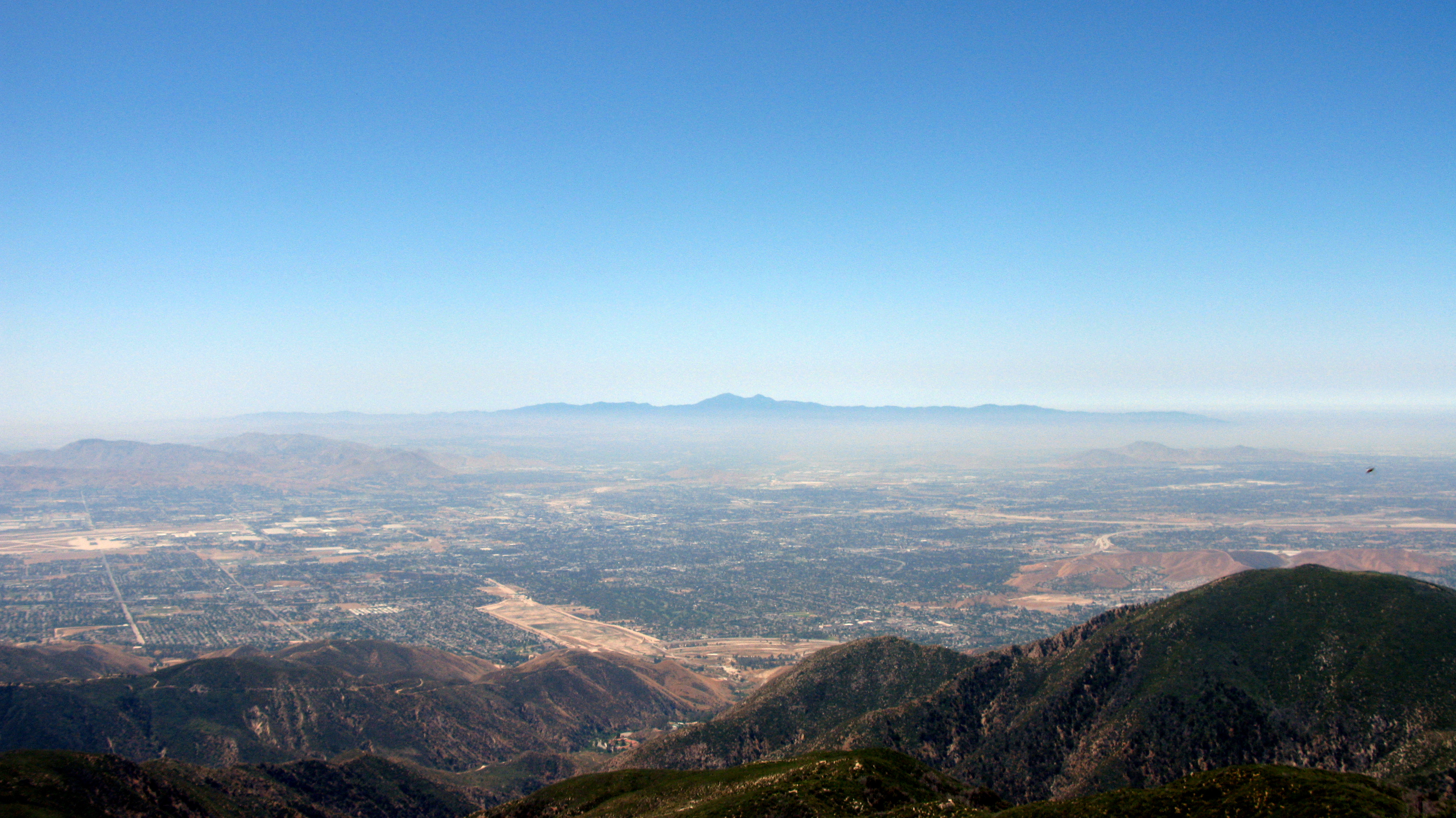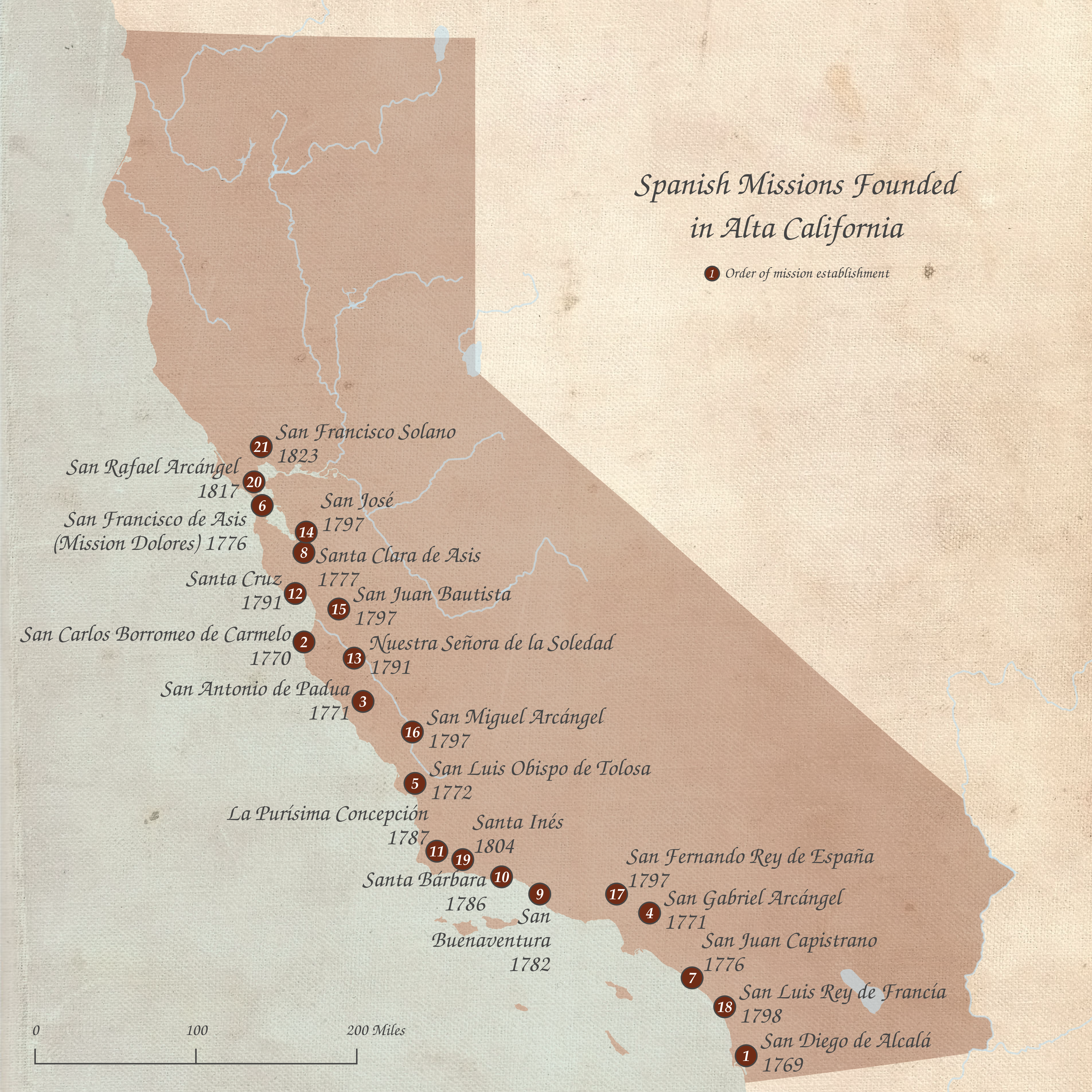|
Antonio María Lugo
The Lugo family of California were prominent during the periods of Spanish and Mexican rule. They were among the early colonists who became known as ''Californios''. Francisco Salvador Lugo Francisco Salvador Lugo (1740–1805), born in Sinaloa, Mexico, came to Las Californias in 1774. He was a soldier in the province and was stationed in northern California until 1781. Next he was assigned as part of the founding of the Pueblo de Los Angeles. Francisco Lugo was one of the soldiers who escorted the Los Angeles Pobladores (farming families and colonists) in 1781 from northern Mexico into California. His name is listed on the plaque of those present at the founding of Los Angeles on September 4, 1781. Lugo married Juana María Martínez y Vianazul. Together they had nine children: Rosa María de Lugo (1761–1797), María Tomasa Ygnacia Lugo Martínez (1763–1816), Salvador Lugo (1766–1784), Gerónimo Teodoro Lugo (1773–?), José Ignacio de Lugo (1775–1800), María Antonia Isa ... [...More Info...] [...Related Items...] OR: [Wikipedia] [Google] [Baidu] |
Stephen Clark Foster
Stephen Clark Foster (December 17, 1820 – January 27, 1898) was a politician, the first American mayor of Los Angeles under United States military rule. Foster served in the state constitutional convention, and was elected to the State Senate. He was elected as mayor of Los Angeles in 1856, and later elected for four terms to the Los Angeles County Board of Supervisors. Early life and education Foster was born in Machias, Maine, December 17, 1820. He graduated from Yale College in 1840. Career He taught at a private academy in the South. In 1845 at age 25, he headed for California, like many other young single men, via El Paso and Santa Fe. While in Santa Fe, Foster was hired by Quartermaster Wm. M.D. McKissack to be an interpreter for the Mormon Battalion of Volunteers, then on its way to California as part of the Mexican–American War forces sent to California. He acted unofficially as an additional guide. In the stormy period when California was under US military rul ... [...More Info...] [...Related Items...] OR: [Wikipedia] [Google] [Baidu] |
San Bernardino Asistencia
The San Bernardino de Sena Estancia (also known as the San Bernardino Rancho or Asistencia) was a ranch outpost of Mission San Gabriel Arcángel in what is now Redlands, California, Redlands, California, United States. It was built to graze cattle, and for Indian reductions of the Serrano people and Cahuilla people into Mission Indians. Over time, it fell into disrepair, until the early 20th century, when a new, larger structure was built as a museum. The new structure shares the same architectural style, but is not otherwise similar to the original buildings. 19th century The ''estancia'' was established in 1819. A second ''estancia'' was established and built around 1830 at Politana, California, Politana rancheria, approximately from the original 1819 site. The Politana site of the San Bernardino de Sena Estancia is a California Historical Landmark. The California missions' lands were Mexican secularization act of 1833, secularized in 1833–34. In 1842 Governor Juan B. Alvar ... [...More Info...] [...Related Items...] OR: [Wikipedia] [Google] [Baidu] |
Juan Antonio
Juan Ignacio Antonio (born 5 January 1988) is an Argentine former professional football who played as a forward Forward is a relative direction, the opposite of backward. Forward may also refer to: People *Forward (surname) Sports * Forward (association football) * Forward (basketball), including: ** Point forward ** Power forward (basketball) ** Smal .... External links * Player profile on the River Plate website 1988 births Living people People from Trelew Footballers from Chubut Province Argentine men's footballers Argentine expatriate men's footballers Men's association football forwards Club Atlético River Plate footballers Brescia Calcio players Ascoli Calcio 1898 FC players UC Sampdoria players SSD Varese Calcio players Parma Calcio 1913 players Feralpisalò players Serie A players Serie B players Serie C players Expatriate men's footballers in Italy 21st-century Argentine sportsmen {{Argentina-footy-forward-1980s-stub ... [...More Info...] [...Related Items...] OR: [Wikipedia] [Google] [Baidu] |
Cahuilla
The Cahuilla, also known as ʔívil̃uqaletem or Ivilyuqaletem, are a Native Americans in the United States, Native American people of the various tribes of the Cahuilla Nation, living in the inland areas of southern California."California Indians and Their Reservations. ''SDSU Library and Information Access.'' Their original territory encompassed about . The traditional Cahuilla territory was near the geographic center of Southern California. It was bounded to the north by the San Bernardino Mountains, to the south by Borrego Springs, California, Borrego Springs and the Chocolate Mountains, to the east by the Colorado Desert, and to the west by the San Jacinto Mountains, San Jacinto Plain and the eastern slopes of the Palomar Mountain Range, Palomar Mountains. |
Indigenous People Of California
Indigenous peoples of California, commonly known as Indigenous Californians or Native Californians, are a diverse group of nations and peoples that are indigenous to the geographic area within the current boundaries of California before and after European colonization. There are currently 109 federally recognized tribes in the state and over forty self-identified tribes or tribal bands that have applied for federal recognition. California has the second-largest Native American population in the United States. Most tribes practiced forest gardening or permaculture and controlled burning to ensure the availability of food and medicinal plants as well as ecosystem balance. Archeological sites indicate human occupation of California for thousands of years. European settlers began exploring their homelands in the late 18th century. This began with the arrival of Spanish soldiers and missionaries who established Franciscan missions that instituted an immense rate of death and ... [...More Info...] [...Related Items...] OR: [Wikipedia] [Google] [Baidu] |
Inland Empire
The Inland Empire (commonly abbreviated as the IE) is a metropolitan area and region inland of and adjacent to coastal Southern California, centering around the cities of San Bernardino and Riverside, and bordering Los Angeles County and Orange County to the west and San Diego County to the south. The bulk of the population is centered in the cities of northwestern Riverside County and southwestern San Bernardino County, and is sometimes considered to include the desert communities of the Coachella and Victor Valleys, respectively on the other sides of the San Gorgonio Pass and San Bernardino Mountains from the Santa Ana River watershed that forms the bulk of the Inland Empire; a much broader definition includes all of Riverside and San Bernardino counties. The combined land area of the counties of the Inland Empire is larger than ten U.S. states—West Virginia, Maryland, Hawaii, Massachusetts, Vermont, New Hampshire, New Jersey, Connecticut, Delaware, and Rhode Is ... [...More Info...] [...Related Items...] OR: [Wikipedia] [Google] [Baidu] |
Yucaipa, California
Yucaipa ( Serrano: ''Yukaipa't'') is a city located east of San Bernardino, in San Bernardino County, California, United States. The population was 54,542 at the 2020 census, up from 51,367 at the 2010 census. Yucaipa has the distinction of being the longtime home to a large population of Serrano Native Americans. History Prior to the Spanish colonization of the Americas and the arrival of European settlers from Mexico, the Yucaipa Valley was known as ''Yukaipa't'', which meant "green valley" in the Serrano American Language. The land was home to the Serrano Native Americans for thousands of years. Today, some of their descendants are enrolled in the San Manuel Band of Mission Indians. Yucaipa Rancheria Yucaipa Valley supported a large population of Serrano Native Americans. The fertile valley was watered by springs and creeks running out of the San Bernardino Mountains. The Serrano Americans lived in this location most of the year, but would make excursions into the ... [...More Info...] [...Related Items...] OR: [Wikipedia] [Google] [Baidu] |
San Bernardino Valley
The San Bernardino Valley () is a valley in Southern California located at the south base of the Transverse Ranges. It is bordered on the north by the eastern San Gabriel Mountains and the San Bernardino Mountains; on the east by the San Jacinto Mountains; on the south by the Temescal Mountains and Santa Ana Mountains; and on the west by the Pomona Valley. Elevation varies from on valley floors near Chino, California, Chino to near San Bernardino, California, San Bernardino and Redlands, California, Redlands. The valley floor is home to over 80% of the more than 4 million people in the Inland Empire (California), Inland Empire region. History The San Bernardino Valley was originally inhabited by Indigenous peoples of California, Californian Native Americans, including the Serrano people, Serrano, Cahuilla people, Cahuilla, and Tongva people, Tongva tribes. The Mohave Trail, a trade route from the Mohave villages on the Colorado River that crossed the Mojave Desert from spring ... [...More Info...] [...Related Items...] OR: [Wikipedia] [Google] [Baidu] |
Juan Jose Sepulveda
''Juan'' is a given name, the Spanish and Manx versions of ''John''. The name is of Hebrew origin and has the meaning "God has been gracious." It is very common in Spain and in other Spanish-speaking countries around the world and in the Philippines, and also in the Isle of Man (pronounced differently). The name is becoming popular around the world and can be pronounced differently according that region. In Spanish, the diminutive form (equivalent to ''Johnny'') is , with feminine form (comparable to ''Jane'', ''Joan'', or ''Joanna'') , and feminine diminutive (equivalent to ''Janet'', ''Janey'', ''Joanie'', etc.). Chinese terms * ( or 娟, 隽) 'beautiful, graceful' is a common given name for Chinese women. * () The Chinese character 卷, which in Mandarin is almost homophonic with the characters for the female name, is a division of a traditional Chinese manuscript or book and can be translated as 'fascicle', 'scroll', 'chapter', or 'volume'. Notable people * Juan (foo ... [...More Info...] [...Related Items...] OR: [Wikipedia] [Google] [Baidu] |
Viceroyalty Of New Spain
New Spain, officially the Viceroyalty of New Spain ( ; Nahuatl: ''Yankwik Kaxtillan Birreiyotl''), originally the Kingdom of New Spain, was an integral territorial entity of the Spanish Empire, established by Habsburg Spain. It was one of several domains established during the Spanish conquest of the Americas, and had its capital in Mexico City. Its jurisdiction comprised a large area of the southern and western portions of North America, mainly what became Mexico and the Southwestern United States, but also California, Florida and Louisiana; Central America as Mexico, the Caribbean like Hispaniola and Martinica, and northern parts of South America, even Colombia; several Pacific archipelagos, including the Philippines and Guam. Additional Asian colonies included " Spanish Formosa", on the island of Taiwan. After the 1521 Spanish conquest of the Aztec Empire, conqueror Hernán Cortés named the territory New Spain, and established the new capital, Mexico City, on the site of Ten ... [...More Info...] [...Related Items...] OR: [Wikipedia] [Google] [Baidu] |
Alta California
Alta California (, ), also known as Nueva California () among other names, was a province of New Spain formally established in 1804. Along with the Baja California peninsula, it had previously comprised the province of , but was made a separate province in 1804 (named ). Following the Mexican War of Independence, it became a territory of First Mexican Empire, Mexico in April 1822 and was renamed in 1824. The territory included all of the present-day U.S. states of California, Nevada, and Utah, and parts of Arizona, Wyoming, and Colorado. The territory was with Baja California Territory, Baja California (as a single ) in Mexico's 1836 ''Siete Leyes'' (Seven Laws) constitutional reform, granting it more autonomy. That change was undone in 1846, but rendered moot by the outcome of the Mexican–American War in 1848, when most of the areas formerly comprising Alta California Mexican Cession, were ceded to the U.S. in Treaty of Guadalupe Hidalgo, the treaty which ended the war. In ... [...More Info...] [...Related Items...] OR: [Wikipedia] [Google] [Baidu] |



